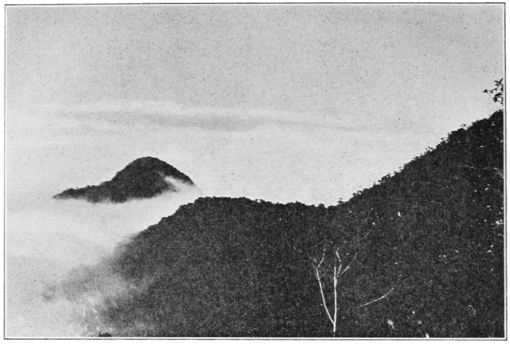day and night, extends over two or three weeks in May or early June. A second one occurs in October. For several weeks preceding each of these rainy seasons there may be dense clouds and occasional showers at midday. From four or five o'clock in the late afternoon, till nine or ten in the morning, the sky above is cloudless. The sun sets in splendor over the western peaks and the moon and stars shine out with a sparkling brilliancy. The clear days after "the seasons" are the most beautiful of all the year. On the mountains 'round about, where all had been dark green and gray before the rains, the foliage now takes on a new brightness, and the scar-like watercourses are now veiled by white cataracts that plunge hundreds of feet down the mountainsides. Beyond the lower mountains of Guava Ridge one can see on, past the foaming surf line, out a hundred miles over the blue Caribbean.
During the late summer, and again in midwinter, the rainfall may average but three or four inches per month, and it may even be fair for weeks together, so that the soil of the hilltops and ridges about Cinchona becomes very dry. The total rainfall for the year at Cinchona is from 100 to 115 inches. North of the mountains, three miles away, there may be 200 inches in a year. The temperature at Cinchona ranges from 48 to 78 degrees, but these extremes are seldom reached. In June, 1906, while New York and Baltimore had temperatures in the upper nineties, the thermometer at Cinchona reached 72 degrees but twice, and then for but an hour or two at a time. At night, on these same days, with temperatures of 52 or 54 degrees, we were ready to enjoy the open fire of juniper logs in the living room of the bungalow.

